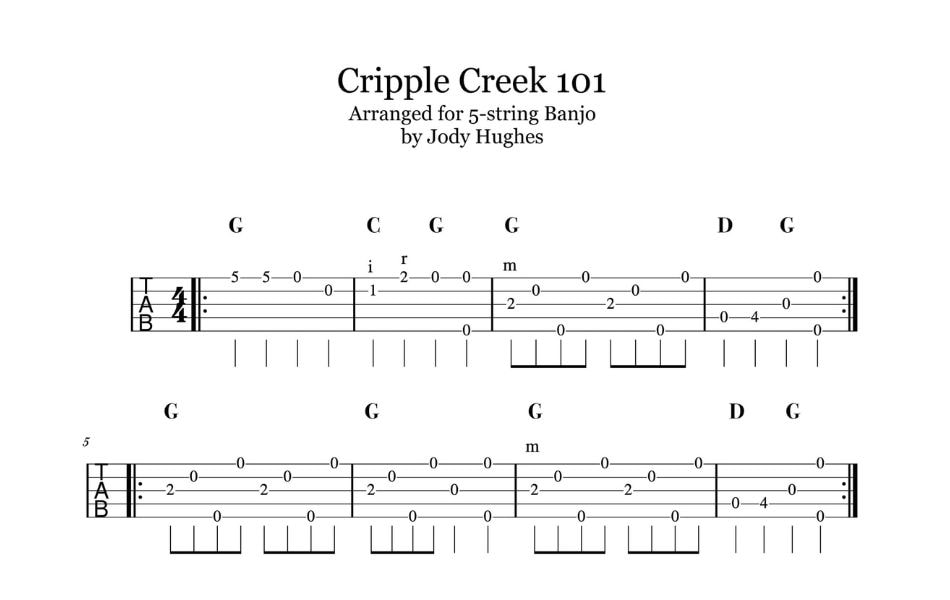One of the first things you’ll encounter on your banjo adventure is banjo tablature, often referred to as “banjo tabs.” These simple notations provide the key to unlocking a treasure trove of banjo music. In this beginner’s guide, we’ll dive into the fundamentals of easy banjo tabs, giving you the tools you need to start playing popular songs in no time.
Contents
What are easy banjo tabs?
Definition
Easy banjo tabs are simplified versions of banjo tablature (tab) designed to be straightforward and accessible, especially for beginners. Tablature is a form of musical notation that represents where and how to play notes on the banjo without using traditional sheet music notation.
Banjo tabs simplify the notation and often focus on basic melodies or chord progressions. They typically use numbers and special symbols to represent finger positions on the fretboard and which strings to play. Here’s a basic example of how banjo tabs are structured:
Top Line: Often represents the highest string on the banjo (usually the 4th string). This string is closest to the player.
Next Line: Represents the 3rd string on the banjo.
Next Line: Represents the 2nd string.
Bottom Line: Represents the lowest string on the banjo (usually the 1st string).

Some symbols of banjo tabs
Numbers and special symbols indicate the fret to press and the string to play. For example:
- The number 0 means to play an open string (without pressing any fret).
- The number 1 means to press the first fret on the indicated string.
- The number 2 means to press the second fret on the indicated string.
- Other symbols like “T” may indicate a thumb strike.
Easy banjo tabs are an excellent starting point for beginners who want to learn to play the banjo. They simplify the learning process and make grasping the basics of banjo playing and music easier. As players become more comfortable with these simplified tabs, they can progress to more complex tablatures and expand their repertoire.
How to understand easy banjo tabs for beginners
The instructions you provided relate to fingerings for the picking hand when playing the banjo, specifically with regard to using the thumb, index, and middle fingers to pluck the strings. Here’s a summary of the default fingerings:
- Thumb (T): Typically used to play the 5th, 4th, and 3rd strings. These strings are often referred to as the “drone strings” and are commonly played with the thumb to create a consistent rhythm or drone effect.
- Middle Finger (M): Typically used to play the 1st string. The 1st string is often played with the middle finger.
- Index Finger (I): Typically used to play the 2nd string. The 2nd string is usually played with the index finger.
Some banjo tabs for newbie
Here is an illustration of easy banjo tabs in some songs. These are familiar songs and very suitable for beginners.

“Cripple Creek” is the name of a traditional folk song in the United States, often played on the banjo. It is a popular bluegrass and old-time banjo song and is frequently used for practice and performances in folk music.
“Cripple Creek” has lyrics, but it is also commonly played as an instrumental piece on the banjo. This song typically exemplifies the “clawhammer” and “three-finger picking” styles of banjo playing. It is one of the common banjo tunes that beginners often explore to start playing the banjo and become familiar with basic banjo playing techniques.
As we wrap up our exploration of the fundamentals of easy banjo tabs, you’re now equipped with the knowledge and tools to embark on a rewarding musical journey. Embrace the challenge, practice regularly, and soon you’ll find yourself strumming and picking your way through familiar songs and maybe even composing your own banjo tunes. As you continue your banjo adventure, keep in mind that music is an ever-evolving art form, and your journey with the banjo will be a rewarding one.
